History
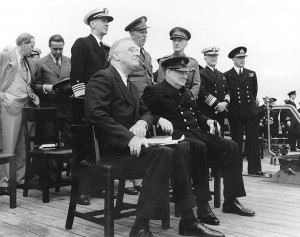
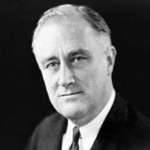
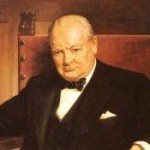 In a military operation, especially as part of a war, absolute secrecy is vital. Those involved with the planning have to know that they can trust everyone who is around them. One of the most important operations of World War II was the D-Day attack…Operation Overlord. Success was vital, and failure was simply not an option, no matter how many men were lost. The attack on Pearl Harbor had finally drawn the United States into World War II, and now we were in it to win it.
In a military operation, especially as part of a war, absolute secrecy is vital. Those involved with the planning have to know that they can trust everyone who is around them. One of the most important operations of World War II was the D-Day attack…Operation Overlord. Success was vital, and failure was simply not an option, no matter how many men were lost. The attack on Pearl Harbor had finally drawn the United States into World War II, and now we were in it to win it.
The success of any mission is found in the planning, so in August 1943, Franklin D Roosevelt and Winston Churchill met in Quebec for the first of two meetings code-named “Quadrant.” Technically, the meeting was the first of two “Quebec Conferences.” The meetings couldn’t even officially talk about the name of the actual operation, “Operation Overlord, which was later known as D-Day to the world. The Americans and the Brits had differences of opinion as to just how the operation was to be handled, but in order to make this operation work, they would have to be in complete agreement, and the mission would have to be kept completely covert!! No one could know the details.
Everyone, from the top men down to the paper supplier was screened to make sure of their loyalties. No stone was left unturned. If any information was leaked, thousands of men could die, and the fate of the world could have been severely compromised. Nevertheless, something was “missed” somehow. A young Canadian named Émile Couture was in charge of stationery supplies that fateful day, and in reality, he had no intention of being a traitor or playing any other nefarious part in the leak of information into the operation. Nevertheless, he managed to walk out of those meetings with the tactical plans for the invasions. It wasn’t even accidental…exactly.
Roosevelt and Churchill were excellent strategists, and their very detailed plans were perfectly laid out. The operation was going to be an amazing success. Now, all they had to do was to keep everything secret until the actual day, as yet unnamed, of the operation. The plans included detailed listings of Allied military assets to be used in the landings…the number of planes, combat cars, ships, and ground soldiers. They only had to keep it very quiet, because the leak of this information could have turned the tide of the war in favor of the Axis powers, and had that happened, our world would be vastly different even from the strange world we are experiencing today. Sergeant Major Émile Couture had been tasked with cleaning up after the meetings and instructed to make sure nothing was left behind.
Couture was doing his job in a meticulous fashion, but while cleaning an office on the third floor of the hotel, he discovered a leather portfolio that was inscribed “Churchill-Roosevelt, Quebec Conference, 1943. Maybe he thought it was just an empty portfolio, and so thought he could actually have an amazing souvenir of such a monumental meeting. Just think of the stories he could tell his children and grandchildren about the time he got to help out with such an important meeting between two of the most important men if his time. History doesn’t really tell us what he was thinking, but he decided to keep the portfolio as a souvenir without realizing what was actually in the portfolio. 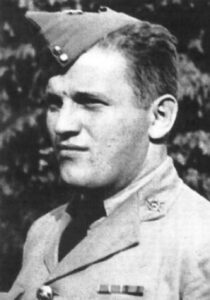 Couture walked out of the Château Frontenac without anyone being any the wiser and drove to the cottage where he was living with his cousins in Lac-Beauport just a few miles outside of Quebec City. Then he took time to examine his “treasure” only to find that he could actually be tried for treason. Couture was more than frightened. He was terrified, and he hid the files under his mattress overnight.
Couture walked out of the Château Frontenac without anyone being any the wiser and drove to the cottage where he was living with his cousins in Lac-Beauport just a few miles outside of Quebec City. Then he took time to examine his “treasure” only to find that he could actually be tried for treason. Couture was more than frightened. He was terrified, and he hid the files under his mattress overnight.
In the morning, knowing that he would have to face the music, he took the portfolio and its files to his superior, Brigadier Edmond Blais. Blais told Couture to go home and wait. He would be dealt with in the morning. Couture could have been put in prison for the remainder of the war in order to make certain that he did not leak the information he had seen. He was, after all, a low-ranking soldier, and shouldn’t have access to such top-secret information. Instead, he was sent home after being questioned by Scotland Yard and the FBI.
Whether Couture was terrified to say anything, or just an honorable soldier, he never leaked the information he had seen. Blais must have liked Couture, because he sent a letter on August 28, 1943, in which he recommended the Sergeant Major Émile Couture be awarded “the greatest accomplishment that can be given an NCO (non-commissioned officer).
On June 6, 1944, the Allies staged the largest amphibious military landing in history. Always remembered as D-Day, Operation Overlord saw 150,000 troops hit the beaches of Normandy, push back the German army and set the course for the eventual victory of the Allied forces. The secret of D-Day was kept, and the operation went off without a hitch.
Couture was rewarded for his discretion during a ceremony in September 1944, when he was commended for his actions by being granted a British Empire Medal. During the ceremony, there was no mention of what Couture had actually done to merit the award other than “services rendered.” I wonder if anyone thought that odd. Nevertheless, they really couldn’t tell, because it would have been embarrassing to the military for the public to see how easily someone walked out of the hotel with top secret documents.
Couture’s daughter, Anne Couture, insists that her father never told anyone. But someone did leak the story, and Couture became the center of the media’s attention. He gave several interviews over time, but he never told anyone whose office he had been cleaning when he found the documents or who he thought might have left them there. Though, Anne admits, he may have told her mother. If he did, Georgette Larochelle isn’t telling anyone, and in an effort to clear the record concerning her husband’s involvement in the whole incident. She has turned over all the memorabilia and documentation the family has kept over the years. It has all been donated to the Royal Museum and has been displayed in an exhibit since the 75th anniversary of the 2nd 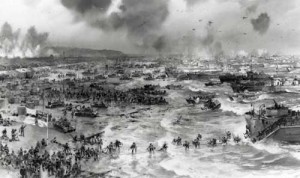
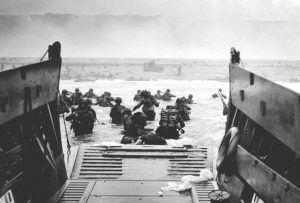 Quebec Conference.
Quebec Conference.
According to the museum’s director and curator, the documents are “convincing and some of the artifacts are considered invaluable” to the museum. He called the personal items which were specially made for the conference, “a great witness of this event of national significance.”
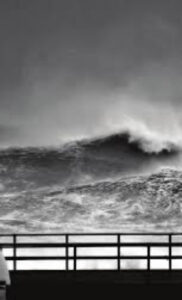 The normal hurricane season is from June 1 to November 30, and since we have our first hurricane in the Gulf of Mexico right now, it looks like it’s right on time. Nevertheless, for places like New York, where it is normally a little cooler, the hurricane season starts a little later, and may not really arrive at all. However, on June 4, 1825, a rare early hurricane arrived, moving off the East Coast and tracking south of New York. The hurricane caused several ship wrecks, and killed seven people.
The normal hurricane season is from June 1 to November 30, and since we have our first hurricane in the Gulf of Mexico right now, it looks like it’s right on time. Nevertheless, for places like New York, where it is normally a little cooler, the hurricane season starts a little later, and may not really arrive at all. However, on June 4, 1825, a rare early hurricane arrived, moving off the East Coast and tracking south of New York. The hurricane caused several ship wrecks, and killed seven people.
The National Hurricane Center, states that on average, hurricane winds have impacted the New York City area every 19 years, and major hurricanes, of a Category 3 or higher, only every 74 years. The highest hurricane reading, Category 5 hurricane is not expected to occur there at all, because of the climate conditions there.
Nevertheless, on June 4, 1825, forming ahead of what is now considered hurricane season, a severe tropical storm surprised the Atlantic seaboard from Florida to New York City. At that time, they did not have the prediction capabilities, and this storm was first sighted near Santo Domingo on May 28th. It moved across Cuba on June 1st, with gale force winds, 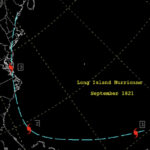 beginning at Saint Augustine, and approaching US soil on the June 2nd, and impacting Charleston, North Carolina on June 3rd.
beginning at Saint Augustine, and approaching US soil on the June 2nd, and impacting Charleston, North Carolina on June 3rd.
The tide in North Carolina rose six feet at New Bern and fourteen feet at Adams Creek. As the tide rushed in, more than 25 ships were driven ashore at Ocracoke, 27 near Washington, and also some at New Bern. The plantations on the coastal areas near the South River were inundated with water, causing a heavy loss of crops and livestock. New Bern experienced heavy damage near the waterfront.
The storm pummeled Norfolk, with horrific force for 27 hours as the storm passed by to the east beginning on the 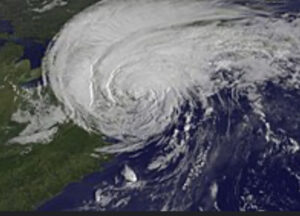 morning of June 3rd. The wind was relentless, uprooting trees as it went. At noon on June 4th, stores on the wharves were flooded in a surge up five feet deep. High winds howled through the Washington DC area. The storm then moved northeast past Nantucket on June 5th.
morning of June 3rd. The wind was relentless, uprooting trees as it went. At noon on June 4th, stores on the wharves were flooded in a surge up five feet deep. High winds howled through the Washington DC area. The storm then moved northeast past Nantucket on June 5th.
The storm reminded many people of the September gale of 1821, except that the September gale would have been much more common. There haven’t been many early June hurricanes in that area since 1825, but there have been a number of hurricanes to hit the area since, including Hurricane Sandy, which did much damage in New York City, including the subway area.
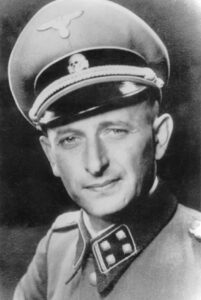 Following the end of World War II, many members of the Third Reich fled Germany, and relocated to Argentina this had all been planned as it became more and more clear that the Nazi Regime would not be successful. The ultimate plan was to lay low for a while, and then form a new Third Reich, or more likely the Fourth Reich. The main figures of the Third Reich were given new identities and smuggled out as soon as they could. It is unknown just exactly how many made it out, but files discovered in Argentina reveal the names of 12,000 Nazis who lived there in the 1930s, many of whom had Swiss bank accounts.
Following the end of World War II, many members of the Third Reich fled Germany, and relocated to Argentina this had all been planned as it became more and more clear that the Nazi Regime would not be successful. The ultimate plan was to lay low for a while, and then form a new Third Reich, or more likely the Fourth Reich. The main figures of the Third Reich were given new identities and smuggled out as soon as they could. It is unknown just exactly how many made it out, but files discovered in Argentina reveal the names of 12,000 Nazis who lived there in the 1930s, many of whom had Swiss bank accounts.
The Jewish people were understandably furious at not only the atrocities that their people had been subjected to, but the fact that with the escape, the fact is that many of the Nazi criminals would never answer for what they did, much less be punished for those atrocities. Nevertheless, the initial intent was to seek justice.
So, on December 13, 1949, Mossad was established. It later became the Institute for Intelligence and Special Operations. While Mossad has many uses today, it was primarily designed to go out and get the war criminals who were in hiding in Argentina and other parts of South America,  where there was no extradition. Mossad planned to go in without authorization, kidnap the Nazi war criminals, and take them to Israel to stand trial.
where there was no extradition. Mossad planned to go in without authorization, kidnap the Nazi war criminals, and take them to Israel to stand trial.
Some people may assume that Israel’s vaunted Mossad intelligence service devoted a great deal of energy to hunting for Nazis to seek revenge for the Holocaust. That was not the case. The desire to bring the murderers of Jews to justice was not deemed as important to Israel’s leaders in the early years of statehood as more pressing issues directly effecting the nation’s security. One of those issues, was preventing Nazis who went to Egypt from aiding in Nasser’s development of missile technology.
There were a few of the war criminals that the Mossad brought to Justice. One well known criminal was Adolf Eichmann, the man who engineered the Final Solution. His “contribution” to the atrocity that was the Holocaust was one of the most heinous. In 1960, Mossad tracked Eighmann to his home in Argentina, kidnapped him, and brought  him to trial in Israel. He was convicted of war crimes and was actually the only person ever sentenced to death in Israel. The Argentinian government was furious because their no extradition policy was violated by Mossad. The immediately demanded that Israel return Eichmann, and then asked for reparations for Eichmann’s seizure by Mossad agents in Buenos Aires. Nevertheless, on August 2, 1969 the dispute was resolved by Israel keeping Eichmann, but acknowledging that Argentina’s fundamental rights had been infringed upon. No further repercussions were given.
him to trial in Israel. He was convicted of war crimes and was actually the only person ever sentenced to death in Israel. The Argentinian government was furious because their no extradition policy was violated by Mossad. The immediately demanded that Israel return Eichmann, and then asked for reparations for Eichmann’s seizure by Mossad agents in Buenos Aires. Nevertheless, on August 2, 1969 the dispute was resolved by Israel keeping Eichmann, but acknowledging that Argentina’s fundamental rights had been infringed upon. No further repercussions were given.
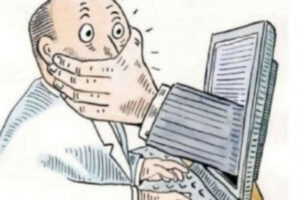
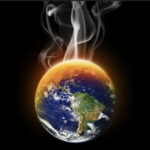 In December of 2006, some 10,000 US researchers signed a statement protesting about political interference in the scientific process. In other words, the politicians were manipulating the scientific outcomes of research in order to sell their own agenda to the people. The statement, which included the backing of 52 Nobel Laureates, demanded a restoration of scientific integrity in government policy. These scientists were tired of being forced to have their research line up with the outcome that the government wanted. According to the American Union of Concerned Scientists, their research data is being misrepresented for political reasons. The statement claims that scientists working for federal agencies have been asked to change data to fit policy initiatives. Basically, these scientists are whistle blowers, who stand to lose their funding because they won’t play ball anymore, but science whose outcome is manipulated by politics isn’t science anymore anyway, is it.
In December of 2006, some 10,000 US researchers signed a statement protesting about political interference in the scientific process. In other words, the politicians were manipulating the scientific outcomes of research in order to sell their own agenda to the people. The statement, which included the backing of 52 Nobel Laureates, demanded a restoration of scientific integrity in government policy. These scientists were tired of being forced to have their research line up with the outcome that the government wanted. According to the American Union of Concerned Scientists, their research data is being misrepresented for political reasons. The statement claims that scientists working for federal agencies have been asked to change data to fit policy initiatives. Basically, these scientists are whistle blowers, who stand to lose their funding because they won’t play ball anymore, but science whose outcome is manipulated by politics isn’t science anymore anyway, is it.
In the statement the Union released, it included an “A to Z” guide that it says documents dozens of recent allegations involving censorship and political interference in federal science, covering issues ranging from global warming to sex education. When Congress won’t stand up for scientific integrity, it left the door open for the White House to censor the work of agencies like the Environmental Protection Agency and the Food and Drug Administration. Dr Peter Gleick, president of the Pacific Institute for Studies in Development, Environment and Security said, “It’s very difficult to make good public policy without good science, and it’s even harder to make good public policy with bad science. In the last several years, we’ve seen an increase in both the misuse of science, and I would say an increase of bad science in a number of very important issues; for example, in global climate change, international peace and security, and water resources.”
The statement released at the American Geophysical Union’s Fall Meeting…the annual gathering of Earth scientists, triggered a major row when a discussion resulted in the renowned US space agency climate scientist Dr James Hansen claimed that he had come under pressure not to talk to the media on global warming issues. Michael Halpern from the UCS said the statement of objection to political interference had been supported by researchers regardless of their political views. Halpern said, “This science statement that has now been signed by the 10,000 scientists is signed by science advisers to both Republican and Democratic administrations dating back to President Eisenhower, stating that this is not business as usual and calling for this practice to stop.” 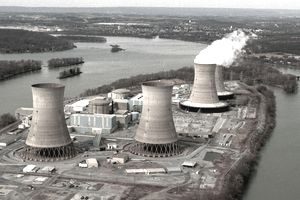
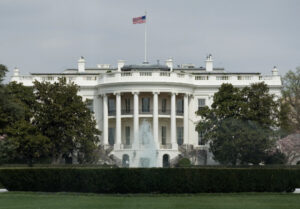 With the statement of objection, the Union expressed a hopefulness that the new Congress taking office that January would show a greater commitment to protecting the integrity of the scientific process. Unfortunately, I don’t think that has been the case with that Congress, nor with any others. Manipulating science to control the population seems to be the political way of doing things.
With the statement of objection, the Union expressed a hopefulness that the new Congress taking office that January would show a greater commitment to protecting the integrity of the scientific process. Unfortunately, I don’t think that has been the case with that Congress, nor with any others. Manipulating science to control the population seems to be the political way of doing things.
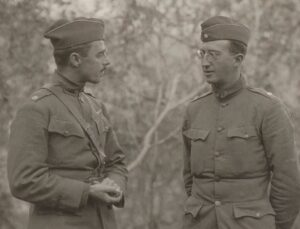
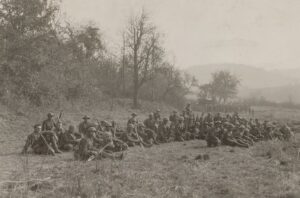 Today is a very important day. It is not about having a three-day weekend, a barbecue, picnic, or even a holiday camping trip. It’s not that these things are bad, or even wrong. It’s really just a matter of remembering and showing respect for those men and women who went to war and didn’t come home alive. Those men and women gave their all, their very lives to keep us and so many others around the world safe. They could have stayed home. There isn’t a draft anymore, although many were drafted, because in a war the likes of the world wars, and others, the men and women were dying so fast that the volunteers couldn’t keep up. So, they held a draft, and those men, because at that time women weren’t drafted, did their duty, and went to fight the war, many losing their lives in the process.
Today is a very important day. It is not about having a three-day weekend, a barbecue, picnic, or even a holiday camping trip. It’s not that these things are bad, or even wrong. It’s really just a matter of remembering and showing respect for those men and women who went to war and didn’t come home alive. Those men and women gave their all, their very lives to keep us and so many others around the world safe. They could have stayed home. There isn’t a draft anymore, although many were drafted, because in a war the likes of the world wars, and others, the men and women were dying so fast that the volunteers couldn’t keep up. So, they held a draft, and those men, because at that time women weren’t drafted, did their duty, and went to fight the war, many losing their lives in the process.
I happened to watch a movie the other night, called “The Lost Battalion.” It was a true event from World War I. It was called “The Lost Battalion” because of the heavy losses incurred by the nine companies of the US 77th Division of roughly 554 men, who were isolated by German forces during World War I after an American attack in the Argonne Forest in October 1918. Of the 554 men, roughly 197 were killed in action and approximately 150 missing or taken prisoner before the 194 remaining men were rescued. These men were not lost. The US Army knew where they were…pretty much, but they were lost, because it was expected that all would be lost, and that was almost the case. During the battle, the men had to leave the trenches and run, almost completely unprotected at the Germans entrenched on the other side of the hill. The battle was gruesome, and the movie was quite graphic. I’m sure many people would say that they shouldn’t have shown so much blood and mutilation, but if they “sugar coat” it, do we really understand how horrible war is?
The battalion was led by Major Charles W Whittlesey who survived the attack, but refused to be transported out ahead of his men, choosing instead to walk out with them. When the attack began in the Argonne, the 77th Division was under the belief that French forces were supporting their left flank and two American units including the 92nd Infantry Division were supporting their right. Within the 77th sector, some units, including Whittlesey’s 308th Infantry, were making significant headway, but unbeknownst to Whittlesey’s unit, the units to their left and right had been stalled, and actually retreated. Without this knowledge, the 77th Battalion moved beyond the rest of the Allied line and found themselves surrounded by German forces. As I watched the movie, my first thought was, why don’t they stay and fight from the trenches? Of course, I quickly realized that you can’t take the hill from the trench. These men had to dig deep within themselves, and leave the safety of the trench, knowing that they would most likely die right there, if the Allies were to have the victory. That is 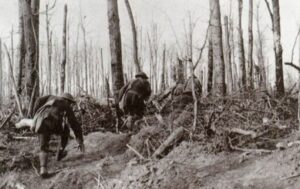
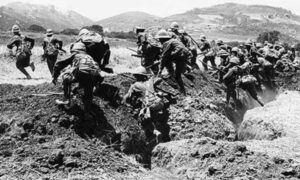 giving your all!! That is what Memorial Day is really all about…the men and women who charged the enemy, accepting their fate of almost certain death, to win the war and protect our freedoms. These men and so many like them are the heroes of this day…a fact that we must never forget. I thank every fallen soldier this day, because you gave your all…selflessly and willingly, and you will never be forgotten!!
giving your all!! That is what Memorial Day is really all about…the men and women who charged the enemy, accepting their fate of almost certain death, to win the war and protect our freedoms. These men and so many like them are the heroes of this day…a fact that we must never forget. I thank every fallen soldier this day, because you gave your all…selflessly and willingly, and you will never be forgotten!!
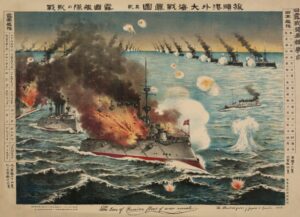 It’s a difficult thing to discover that, as a nation, with a naval fleet, what you thought was strong, is simply not enough. This was the position that Russia found themselves during the Russo-Japanese War, when the Russian Baltic Fleet is nearly destroyed at the Battle of Tsushima Strait. The defeat was devastatingly decisive. Only 10 of the 45 Russian warships were able to escape to safety. The Russian leaders had to face the fact that further resistance against Japan’s imperial designs for East Asia was hopeless. They could not do it alone.
It’s a difficult thing to discover that, as a nation, with a naval fleet, what you thought was strong, is simply not enough. This was the position that Russia found themselves during the Russo-Japanese War, when the Russian Baltic Fleet is nearly destroyed at the Battle of Tsushima Strait. The defeat was devastatingly decisive. Only 10 of the 45 Russian warships were able to escape to safety. The Russian leaders had to face the fact that further resistance against Japan’s imperial designs for East Asia was hopeless. They could not do it alone.
The Japanese wanted to divide Manchuria and Korea into spheres of influence, but the plan was rejected by the Russians on February 8, 1904, following the Russian rejection of a Japanese plan to Japan launched a surprise naval attack against Port Arthur, a Russian naval base in China. With that attack, the war was on. The Battle of Port Arthur on February 8 and 9, 1904 marked the commencement of the Russo-Japanese War. The Japanese, in true Japanese style attacked when all the ships were still in port, but I guess that is how war is. It reminds me of Pearl Harbor, of course. The attack was a surprise night attack by a squadron of Japanese destroyers on the neutral Russian fleet anchored at Port Arthur, Manchuria. They continued with another attack the following morning. The fighting would continue until 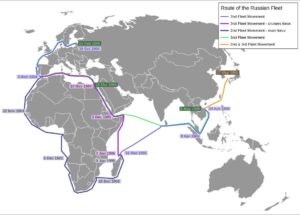 May 1904. While the attack on Port Arthur ended inconclusively, the war was without a doubt, a Japanese victory. The Battle of Port Arthur was the first major battle of the 20th century, and the Russian fleet was decimated. During the war that began then, Japan won a series of decisive victories over the Russians, who underestimated the military potential of its non-Western opponent. In January 1905, the continued attacks resulted in the fall of Port Arthur to Japanese naval and ground forces under Admiral Heihachiro Togo, and by March Russian troops were defeated at Shenyang, China, by Japanese Field Marshal Iwao Oyama. Then came the Battle of Tsushima Strait, fought on May 27 and 28, 1905 (May 14 and 15 in the Julian calendar that Russia used at that time) in the Tsushima Strait located between Korea and southern Japan.
May 1904. While the attack on Port Arthur ended inconclusively, the war was without a doubt, a Japanese victory. The Battle of Port Arthur was the first major battle of the 20th century, and the Russian fleet was decimated. During the war that began then, Japan won a series of decisive victories over the Russians, who underestimated the military potential of its non-Western opponent. In January 1905, the continued attacks resulted in the fall of Port Arthur to Japanese naval and ground forces under Admiral Heihachiro Togo, and by March Russian troops were defeated at Shenyang, China, by Japanese Field Marshal Iwao Oyama. Then came the Battle of Tsushima Strait, fought on May 27 and 28, 1905 (May 14 and 15 in the Julian calendar that Russia used at that time) in the Tsushima Strait located between Korea and southern Japan.
While hope seemed lost, Russian Czar Nicholas II still hoped that the Russian Baltic fleet under Admiral Zinovy Rozhestvensky would be able to challenge Admiral Togo’s supremacy at sea. Unfortunately, during the two-day Battle of Tsushima Strait, more than 30 Russian ships were sunk or captured by the superior Japanese warships. Japanese superiority was made abundantly clear. By August, with a stunning string of Japanese victories, Russia became convinced that they would have to accept the peace treaty mediated by US President 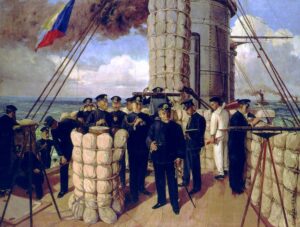 Theodore Roosevelt at Portsmouth, New Hampshire…a treaty that won Roosevelt the Nobel Peace Prize for this achievement. In the Treaty of Portsmouth, Russia recognized Japan as the dominant power in Korea and gave up Port Arthur, the southern half of Sakhalin Island, and the Liaotung Peninsula to Japan.
Theodore Roosevelt at Portsmouth, New Hampshire…a treaty that won Roosevelt the Nobel Peace Prize for this achievement. In the Treaty of Portsmouth, Russia recognized Japan as the dominant power in Korea and gave up Port Arthur, the southern half of Sakhalin Island, and the Liaotung Peninsula to Japan.
Japan emerged from the conflict as the first modern non-Western world power and set its sights on greater imperial expansion. Japan would have to be dealt with another day, and by another power. As for Russia, the military’s disastrous performance in the war sparked the Russian Revolution of 1905.
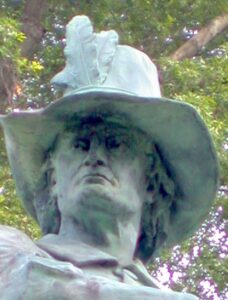 Captain John Mason was an English-born settler, soldier, commander, and Deputy Governor of the Connecticut Colony. While most people want to be remembered for the great things they did during their lives, Captain Mason will always be remembered for something else…being the leader of the massacre of the Pequot Tribe of Native Americans in southeast Connecticut. The group, led by Mason was a group of Puritan settlers and Indian allies, who combined to attack a Pequot Fort in an event known as the Mystic Massacre. The Mystic Massacre took place on May 26, 1637, during the Pequot War, when Connecticut colonizers and their Narragansett and Mohegan allies set fire to the Pequot Fort near the Mystic River. With the fire raging, they shot anyone who tried to escape the wooden palisade fortress, effectively murdering most of the village. In all, there were between 400 and 700 Pequot civilians killed during the massacre. The only Pequot survivors were warriors who were away in a raiding party with their sachem (chief), Sassacus.
Captain John Mason was an English-born settler, soldier, commander, and Deputy Governor of the Connecticut Colony. While most people want to be remembered for the great things they did during their lives, Captain Mason will always be remembered for something else…being the leader of the massacre of the Pequot Tribe of Native Americans in southeast Connecticut. The group, led by Mason was a group of Puritan settlers and Indian allies, who combined to attack a Pequot Fort in an event known as the Mystic Massacre. The Mystic Massacre took place on May 26, 1637, during the Pequot War, when Connecticut colonizers and their Narragansett and Mohegan allies set fire to the Pequot Fort near the Mystic River. With the fire raging, they shot anyone who tried to escape the wooden palisade fortress, effectively murdering most of the village. In all, there were between 400 and 700 Pequot civilians killed during the massacre. The only Pequot survivors were warriors who were away in a raiding party with their sachem (chief), Sassacus.
Prior to the massacre, the Pequot tribe were the dominate Native American tribe in southeast Connecticut, but 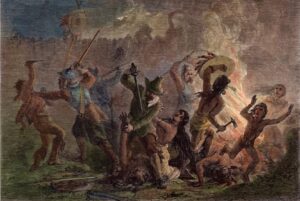 with the massacre, came the end of an era where that was concerned. The massacre was brutal and heinous and should have been met with severe punishment, but at that time in history, the Native Americans were not particularly valued among the people of the colonies. In fact, the Native Americans were probably viewed as the intruders, and not the natives. As more and more Puritans from Massachusetts Bay spread into Connecticut, the conflicts with the Pequots increased. The tribe centered on the Thames River in southeastern Connecticut, and by the spring of 1637, the Pequot tribe killed 13 English colonists and traders. That was when Massachusetts Bay Governor John Endecott organized a large military force to punish the Indians, who were only trying to protect what they saw as theirs. On April 23, 1637, with pressure mounting, 200 Pequot warriors responded defiantly to the colonial mobilization by attacking a Connecticut settlement, killing six men and three women and taking two girls away.
with the massacre, came the end of an era where that was concerned. The massacre was brutal and heinous and should have been met with severe punishment, but at that time in history, the Native Americans were not particularly valued among the people of the colonies. In fact, the Native Americans were probably viewed as the intruders, and not the natives. As more and more Puritans from Massachusetts Bay spread into Connecticut, the conflicts with the Pequots increased. The tribe centered on the Thames River in southeastern Connecticut, and by the spring of 1637, the Pequot tribe killed 13 English colonists and traders. That was when Massachusetts Bay Governor John Endecott organized a large military force to punish the Indians, who were only trying to protect what they saw as theirs. On April 23, 1637, with pressure mounting, 200 Pequot warriors responded defiantly to the colonial mobilization by attacking a Connecticut settlement, killing six men and three women and taking two girls away.
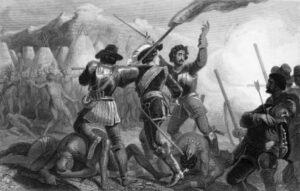 Then on May 26, 1637, everything exploded when, two hours before dawn, the Puritans and their Indian allies marched on the Pequot village at Mystic, slaughtering all but a handful of its inhabitants. Following that attack, Captain Mason attacked another Pequot village on June 5, 1637, this one near what is now Stonington, and again the Indian defenseless inhabitants, were defeated and massacred. In a third attack on July 28, 1637, Mason and his men massacred a village near what is now Fairfield, and the Pequot War finally came to an end. Most of the surviving Pequot were sold into slavery, though a handful escaped to join other southern New England tribes.
Then on May 26, 1637, everything exploded when, two hours before dawn, the Puritans and their Indian allies marched on the Pequot village at Mystic, slaughtering all but a handful of its inhabitants. Following that attack, Captain Mason attacked another Pequot village on June 5, 1637, this one near what is now Stonington, and again the Indian defenseless inhabitants, were defeated and massacred. In a third attack on July 28, 1637, Mason and his men massacred a village near what is now Fairfield, and the Pequot War finally came to an end. Most of the surviving Pequot were sold into slavery, though a handful escaped to join other southern New England tribes.
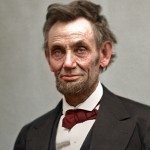
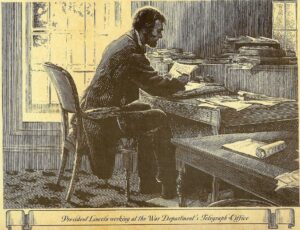 These days, we expect that our president will be familiar with the internet, texting, Facebook, and many other forms of technological advances, but we think of presidents in our past as having to deal with the ancient “technology” of the past, and we even find ourselves almost giggling when we use the term “technology” when speaking about such presidents as Abraham Lincoln. Nevertheless, Abraham Lincoln was a “techy” president…maybe not in the way we use the term today, but since technology often advances at the speed of light, he was quite advanced for his era.
These days, we expect that our president will be familiar with the internet, texting, Facebook, and many other forms of technological advances, but we think of presidents in our past as having to deal with the ancient “technology” of the past, and we even find ourselves almost giggling when we use the term “technology” when speaking about such presidents as Abraham Lincoln. Nevertheless, Abraham Lincoln was a “techy” president…maybe not in the way we use the term today, but since technology often advances at the speed of light, he was quite advanced for his era.
Lincoln had always been a “cutting edge” kind of man, but during the Civil War, his “techy” prowess really came to light. Lincoln was quite taken with the new technology, which he called lightning messages. The federal government had been slow to adopt the telegraph after Samuel Morse’s first successful test message in 1844. Prior to the Civil War, even the federal employees who had to send a telegram from the nation’s capital, had to wait in line with the rest of the public at the city’s central telegraph office. Then, after the outbreak of the Civil 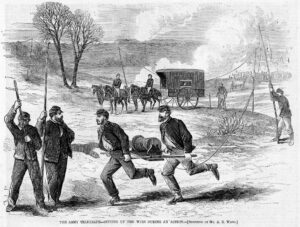 War, the newly created US Military Telegraph Corps undertook the dangerous work of laying more than 15,000 miles of telegraph wire across battlefields, at Lincoln’s orders, so he could transmit news nearly instantaneously from the front lines to the new telegraph office that had been established inside the old library of the War Department building adjacent to the White House in March 1862. He was so interested in the telegraph, in fact, that he sometimes slept on a cot in the telegraph office during major battles. Of course, his main objective was to be able to get information to and from his generals as quickly as possible, but another major objective, that was just as important, was to be out ahead of his Confederate counterpart, Jefferson Davis, who didn’t have the same kind of access. In this way, Lincoln became the first “wired president” nearly 150 years before the advent of texts, tweets, and e-mail, by embracing the original electronic messaging technology…the telegraph.
War, the newly created US Military Telegraph Corps undertook the dangerous work of laying more than 15,000 miles of telegraph wire across battlefields, at Lincoln’s orders, so he could transmit news nearly instantaneously from the front lines to the new telegraph office that had been established inside the old library of the War Department building adjacent to the White House in March 1862. He was so interested in the telegraph, in fact, that he sometimes slept on a cot in the telegraph office during major battles. Of course, his main objective was to be able to get information to and from his generals as quickly as possible, but another major objective, that was just as important, was to be out ahead of his Confederate counterpart, Jefferson Davis, who didn’t have the same kind of access. In this way, Lincoln became the first “wired president” nearly 150 years before the advent of texts, tweets, and e-mail, by embracing the original electronic messaging technology…the telegraph.
President Abraham Lincoln, who was our 16th president, is best remembered for the Gettysburg Address, as well as the Emancipation Proclamation, both of which really stirred the Union, but it was the “techy” side of the man and the nearly 1,000 bite-sized telegrams that he wrote during his presidency, that really helped win the Civil War. It was those telegrams that truly projected presidential power in an unprecedented fashion, for that 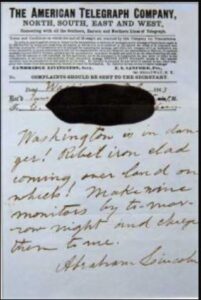
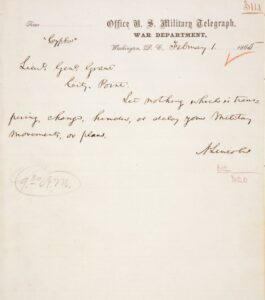 time anyway. The fact is that many people tend to be very slow to accept change, especially something as “new-fangled” as the telegraph was at that time in history. It took a man with foresight and wisdom to see that this was a “weapon” of sorts, that would explode our highly divided country into a place where the side of personal rights and personal freedom could propel it into a great nation, instead of two mediocre nations. The person who did that had to be cutting edge!! He had to be ahead of his time…and that is exactly what President Abraham Lincoln was. It is a sad injustice that he was murdered before his full potential could be realized. I wonder where we might have been today, if he had lived out his term.
time anyway. The fact is that many people tend to be very slow to accept change, especially something as “new-fangled” as the telegraph was at that time in history. It took a man with foresight and wisdom to see that this was a “weapon” of sorts, that would explode our highly divided country into a place where the side of personal rights and personal freedom could propel it into a great nation, instead of two mediocre nations. The person who did that had to be cutting edge!! He had to be ahead of his time…and that is exactly what President Abraham Lincoln was. It is a sad injustice that he was murdered before his full potential could be realized. I wonder where we might have been today, if he had lived out his term.
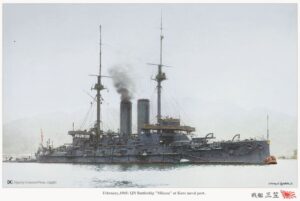 It is not usually my habit to talk about the spectacular ships built by our nation’s enemies, but IJN Mikasa might be a worthy exception. The Mikasa is a “pre-dreadnought” battleship built for the Imperial Japanese Navy (IJN) in the late 1890s and is the only ship of her class. I didn’t know what a “pre-dreadnought” ship was, so I looked into it. “Pre-dreadnoughts were battleships built before 1906, when HMS Dreadnought was launched. Dreadnoughts were more powerful battleships that followed the design of HMS Dreadnought and so made pre-dreadnoughts obsolete.” The ship displaced over 15,000 long tons, with a crew of over 800 men.
It is not usually my habit to talk about the spectacular ships built by our nation’s enemies, but IJN Mikasa might be a worthy exception. The Mikasa is a “pre-dreadnought” battleship built for the Imperial Japanese Navy (IJN) in the late 1890s and is the only ship of her class. I didn’t know what a “pre-dreadnought” ship was, so I looked into it. “Pre-dreadnoughts were battleships built before 1906, when HMS Dreadnought was launched. Dreadnoughts were more powerful battleships that followed the design of HMS Dreadnought and so made pre-dreadnoughts obsolete.” The ship displaced over 15,000 long tons, with a crew of over 800 men.
While she might not have been as powerful, IJN Mikasa was nevertheless a well-built ship, that was able to withstand more than most ships of her time. Named after Mount Mikasa in Nara, Japan, she served as the flagship of Vice Admiral Togo Heihachiro throughout the Russo-Japanese War of 1904–1905. That war included the Battle of Port Arthur, which occurred on the second day of the war, as well as the Battles of the Yellow Sea and Tsushima. Just a few days after the Russo-Japanese War ended, Mikasa’s magazine (a ship’s magazine is where the powder and shells are stored) suddenly exploded and sank the ship. The explosion killed 251 men. Shortly before the Mikasa’s fatal accident, the ship had been involved in the  Battle of Tsushima (May 27, 1905), during which she had shrugged off over 40 shell strikes from heavy Russian naval guns! In that battle 113 of her crew were killed or injured. While such an event would usually mean the end of a ship, IJN Mikasa was salvaged, and while her repairs took over two years to complete, she went on to serve as a coast-defense ship during World War I, and she supported Japanese forces during the Siberian Intervention in the Russian Civil War. Ironically, in 1912 a despondent sailor among her crew tried to blow the ship up once again while the ship was anchored at Kobe. In the end the ship served until 1923, after being pulled up from the drink, repaired, and recommissioned.
Battle of Tsushima (May 27, 1905), during which she had shrugged off over 40 shell strikes from heavy Russian naval guns! In that battle 113 of her crew were killed or injured. While such an event would usually mean the end of a ship, IJN Mikasa was salvaged, and while her repairs took over two years to complete, she went on to serve as a coast-defense ship during World War I, and she supported Japanese forces during the Siberian Intervention in the Russian Civil War. Ironically, in 1912 a despondent sailor among her crew tried to blow the ship up once again while the ship was anchored at Kobe. In the end the ship served until 1923, after being pulled up from the drink, repaired, and recommissioned.
IJN Mikasa was decommissioned on September 23, 1923, following the Washington Naval Treaty of 1922. At that time, she was scheduled for destruction, but at the request of the Japanese government, each of the signatory countries to the treaty agreed that Mikasa could be preserved as a memorial ship. The agreement required that her hull be encased in concrete. On November 12, 1926, Mikasa was opened for display in Yokosuka in the presence of Crown Prince Hirohito and Togo. Unfortunately, the ship deteriorated under the  control of the occupation forces after the surrender of Japan in 1945. Finally, in 1955, American businessman John Rubin, who had formally lived in Barrow, England, wrote a letter to the Japan Times about the state of the ship. His letter served as the catalyst for a new restoration campaign. The Japanese public, who were widely onboard with the idea, supported the project, as did Fleet Admiral Chester W Nimitz. The ship was once again restored, and the museum version reopened in 1961. On August 5, 2009, IJN Mikasa was repainted by sailors from USS Nimitz, and she is now the only surviving example of a “pre-dreadnought” battleship in the world. IJN Mikasa is located in the town of its construction, Barrow-in-Furness, near Mikasa Street on Walney Island.
control of the occupation forces after the surrender of Japan in 1945. Finally, in 1955, American businessman John Rubin, who had formally lived in Barrow, England, wrote a letter to the Japan Times about the state of the ship. His letter served as the catalyst for a new restoration campaign. The Japanese public, who were widely onboard with the idea, supported the project, as did Fleet Admiral Chester W Nimitz. The ship was once again restored, and the museum version reopened in 1961. On August 5, 2009, IJN Mikasa was repainted by sailors from USS Nimitz, and she is now the only surviving example of a “pre-dreadnought” battleship in the world. IJN Mikasa is located in the town of its construction, Barrow-in-Furness, near Mikasa Street on Walney Island.

 Friday, May 16, 1986, found the Cokeville, Wyoming law enforcement officers all out of town. It wasn’t normal for every officer to be out of town, but Cokeville was a small town of just 535 people, and normally a quiet place, where nothing ever happened. It was a peaceful place where everyone knew each other. It was a great place to raise a family. Everyone went to church together, worked together, and played together…on a normal day, but this day was not going to be a normal day. This was a miraculous day.
Friday, May 16, 1986, found the Cokeville, Wyoming law enforcement officers all out of town. It wasn’t normal for every officer to be out of town, but Cokeville was a small town of just 535 people, and normally a quiet place, where nothing ever happened. It was a peaceful place where everyone knew each other. It was a great place to raise a family. Everyone went to church together, worked together, and played together…on a normal day, but this day was not going to be a normal day. This was a miraculous day.
That day, around 1:00pm, David Young, a disgruntled and mentally unstable former Cokeville marshal; his wife, Doris; and his youngest daughter, Princess, known as Penny; entered the town’s only elementary school with an arsenal of weapons and a gasoline bomb in a grocery cart. David Young had initially planned to involve longtime friends Gerald Deppe and Doyle Mendenhall. They had invested money with him in a get-rich-quick scheme that he had called “The Biggie.” This, however, was too much for the men, who eventually refused to participate in the event. Both men were handcuffed in a van outside the school.
No one saw this coming. Why would they? Nothing like that had ever happened in Cokeville before. There was still an air of innocence in the town…until that day. The trio entered the school, and Doug Young began threatening the people. It was at this point that Penny also refused to participate and after her dad said she was “no daughter of his” she left to tell the police. Unfortunately, other than the office personnel at the police station, there was no one who could really help, but help was on the way, nevertheless.
As the events unfolded, the Youngs took the school hostage. They had a bomb, and it was leaking gas. The children were getting sick, and teachers felt led to open the windows. Children later said that they saw people dressed in white told them to go near the windows. One teacher felt led to make a box with tape on the floor so that the bomber was in there by himself. No one was allowed in but Doug, the bomber and his wife, Doris. When the bomber went to the restroom, he put the string that would set off the bomb on his wife’s wrist. She forgot not to move her arm up, and she accidently set off the bomb. She was killed. A bomb expert who examined the bomb said that there had been gunpowder under the bomb, and had it not become wet with gasoline, it would have been as if the air was on fire. He also said that several of the wires were cut, and there was no explanation as to how that had happened, but it meant that the bomb didn’t have its full force. The students said they saw beings of light all around the bomb when it went off. Doug came out of the restroom and saw that he had failed. He went back in and fatally shot himself, after shooting one teacher in the back, somehow missing his spine by about an inch. Other 
 than that teacher, no one was injured. The bomb did go off, but most of its power was miraculously thwarted. Afterwards, everyone who was there, told the same stories of people dressed in white, and beings of light. No one wavered about what they saw. No one changed their minds. You can believe what you want, but as for me…I believe God sent His angels and gave them charge over the teachers and children at Cokeville Elementary School that day. And the angels bore them up and kept them safe. Glory be to God!!
than that teacher, no one was injured. The bomb did go off, but most of its power was miraculously thwarted. Afterwards, everyone who was there, told the same stories of people dressed in white, and beings of light. No one wavered about what they saw. No one changed their minds. You can believe what you want, but as for me…I believe God sent His angels and gave them charge over the teachers and children at Cokeville Elementary School that day. And the angels bore them up and kept them safe. Glory be to God!!

